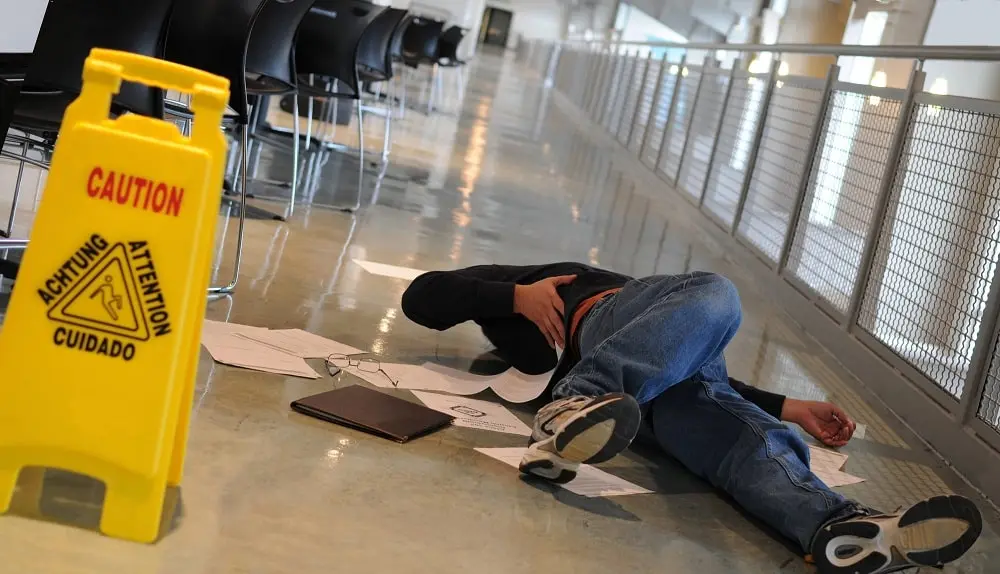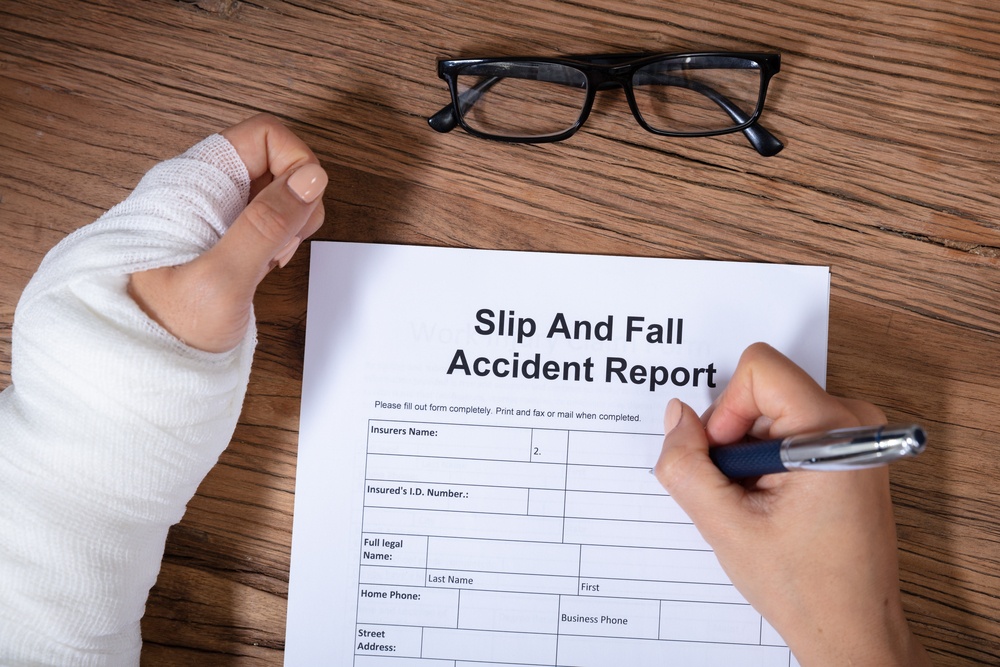
Common Mistakes to Avoid After A Slip and Fall Accident
According to the World Health Organization, around 37.3 million falls result in injuries that require medical attention every year. These injuries can severely impact your quality of life and leave you unable to work or pay your bills. But if your slip and fall occurred due to another person’s negligence, you may be able to get the funds you need to resume your life through a personal injury claim.
Below, learn how to get the most out of your slip and fall claim and discover five costly mistakes to avoid during the process.
What is a slip and fall accident?
In legal terms, a “slip and fall accident” refers to an event where someone suffers injuries due to a fall.
A Slip and fall is a type of premises liability claim, a personal injury claim holding a property owner responsible for injuries on their property. Other types of premises liability claims can include dog bites, pool accidents, and elevator accidents.
Can you file a personal injury claim for a slip and fall?
Yes. If your slip and fall accident happened at another property, it may be possible to file a personal injury claim. But you’ll need to prove that someone, such as the owner or property manager, was negligent.
For example, if you tripped and broke your ankle on a rickety staircase, you could argue that the property manager should have known that the staircase needed repairs. By leaving it as-is, they neglected their duty to maintain a safe environment for visitors.
How are slip and fall settlements calculated?
Because the scope of injuries in a slip and fall claim can vary widely, there isn’t an average slip and fall settlement amount.
In general, you’ll determine the amount you should seek by combining your economic damages (such as medical bills and lost wages) with your non-economic wages (like pain and suffering.) Learn how to calculate these amounts in our pain and suffering compensation guide.
Mistakes to avoid when pursuing a slip and fall case
When seeking a settlement for injuries, building the best case possible is crucial. So, try to avoid the following critical mistakes to maximize your chances of a successful slip-and-fall settlement.
Admitting fault
You must prove that the person you’re filing a claim against was somehow negligent. So, avoid making statements that could later be construed as admitting fault.
You probably know that you shouldn’t say, “It was my fault.” But, even seemingly innocent phrases, like “I should have been more careful,” could later be used against you by an insurance company. Instead, keep your comments to the bare minimum at the scene, and avoid texting or emailing any similar phrases to your friends and family.
Posting about your case on social media
You’ll also need to be careful about statements you make elsewhere, like on your social media pages. Even seemingly innocent statements between friends can be used to weaken your case. For example, don’t make a post about the accident where you call yourself “clumsy.”
You should also avoid posting photos of yourself engaging in activities that might contradict your claim. For example, if you’re filing a claim for a hip injury, don’t post a photo of yourself playing sports or walking a nature trail. Although your injuries may keep you from enjoying yourself to the fullest, the insurance company can take these photos out of context to argue that you’re not really injured.
Failing to accept medical attention
If you can walk away from a slip and fall, you may think your injuries don’t need medical attention. But you may not understand the full extent of your injuries until after some time has passed.
An insurance company may try to claim that by refusing care at the scene, you weren’t really injured. So, seek medical attention for your injuries as soon as possible. If your injuries are severe enough to warrant calling first responders, let them treat you at the scene or take you to the hospital.
Not documenting evidence
You’ll need evidence to build your case. But if you don’t document the scene, crucial elements – like witness statements or photos of the object that caused your fall – could be lost to time.
If you can, thoroughly document the accident scene to include later in your claim. Additionally, check to see if any video footage exists of the accident, like from a security camera. The insurance company won’t be able to debate this firsthand evidence.
Waiting to file a claim
Every state has a statute of limitations for personal injury claims, meaning you only have a set window to file your claim.
The Rhode Island statute of limitations is three years after the date of the incident. If you wait until after the deadline, your case becomes at risk for dismissal. So, take action to file your claim as soon as you can.
Filing a claim without a RI slip and fall lawyer on your side
While many people negotiate their claims on their own, remember that insurance companies aren’t looking out for your best interest. Instead, they’re seeking to minimize their own bottom line. They may try to employ deceptive tactics or pressure you into taking a lowball settlement offer, which is why you need an experienced Rhode Island personal injury lawyer on your side.
At Petrarca Law, we’ll be 100% on your side throughout every step of the claims process. We can file a claim, negotiate for a settlement on your behalf, or even file a lawsuit. We’ll work hard to help you find justice and the funds you need to get your life back on track.
Contact our office today for a free consultation.

